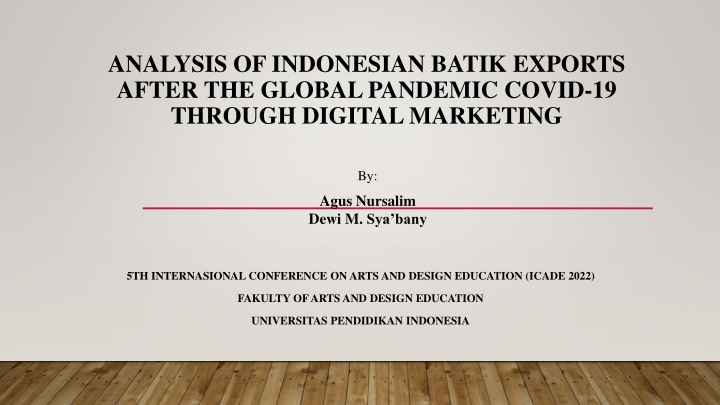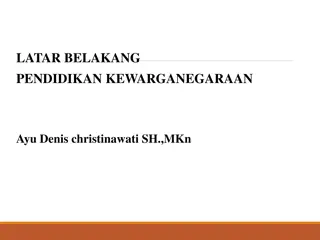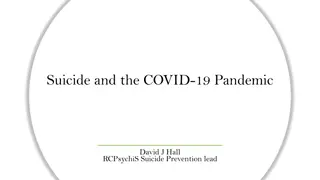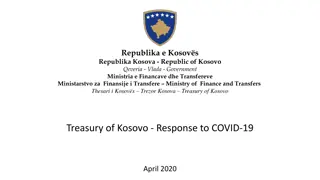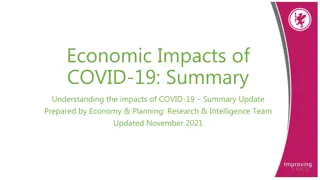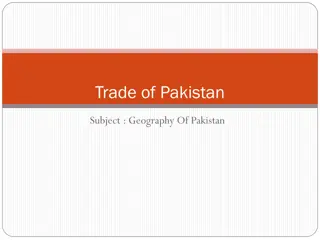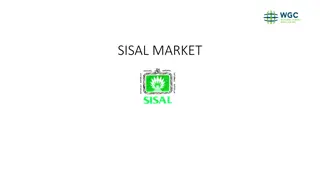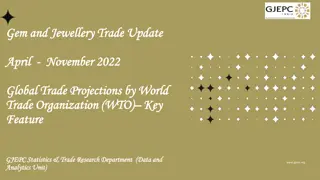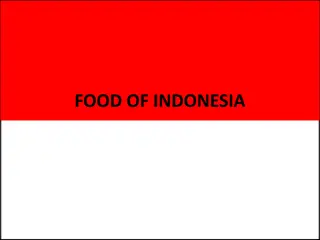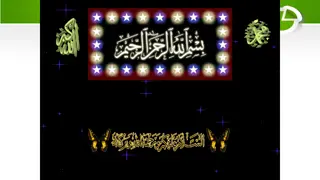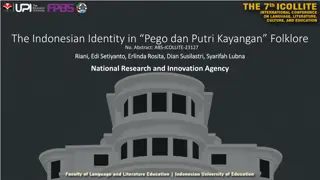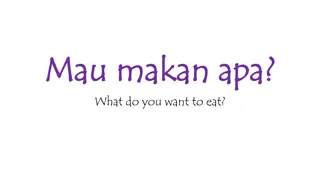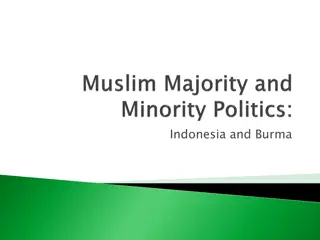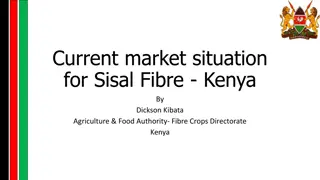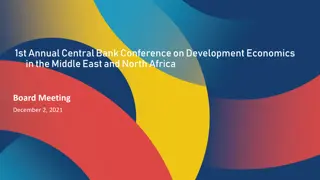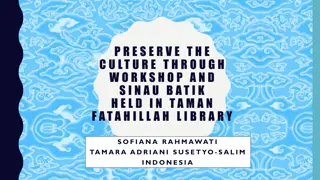ANALYSIS OF INDONESIAN BATIK EXPORTS AFTER THE GLOBAL PANDEMIC COVID-19 THROUGH DIGITAL MARKETING
The study examines the impact of COVID-19 on the Indonesian batik industry and explores strategies for recovery through digital marketing. It analyzes the attitude of craftsmen and entrepreneurs, market transaction patterns, and government support. The research method involves qualitative design with an Ethnographic approach, including observation, interviews, and document analysis. Findings highlight the role of MSMEs and government collaboration in revitalizing batik exports and community economic growth.
Download Presentation

Please find below an Image/Link to download the presentation.
The content on the website is provided AS IS for your information and personal use only. It may not be sold, licensed, or shared on other websites without obtaining consent from the author.If you encounter any issues during the download, it is possible that the publisher has removed the file from their server.
You are allowed to download the files provided on this website for personal or commercial use, subject to the condition that they are used lawfully. All files are the property of their respective owners.
The content on the website is provided AS IS for your information and personal use only. It may not be sold, licensed, or shared on other websites without obtaining consent from the author.
E N D
Presentation Transcript
ANALYSIS OF INDONESIAN BATIK EXPORTS AFTER THE GLOBAL PANDEMIC COVID-19 THROUGH DIGITAL MARKETING By: Agus Nursalim Dewi M. Sya bany 5TH INTERNASIONAL CONFERENCE ONARTS AND DESIGN EDUCATION (ICADE 2022) FAKULTY OFARTS AND DESIGN EDUCATION UNIVERSITAS PENDIDIKAN INDONESIA
BACKGROUND The Covid-19 pandemic has made the batik industry slump to the nadir of batik sales in batik centers dropped sharply by 75% the impact is that not a few batik IKM businesses have closed because they are no longer able to produce. The Indonesian Batik Craftsmen and Entrepreneurs Association (APPBI) reported that in Indonesia there were 151,656 batik craftsmen, during the Covid-19 pandemic, leaving only 37,914 active craftsmen. This means that the pandemic has reduced the number of batik craftsmen in Indonesia by 113,742 craftsmen or 75% of the number of craftsmen that existed before.
BACKGROUND The Ministry of Industry considers the handicraft and batik industry to be one of the sectors that is able to adapt and innovate in the midst of the Covid-19 pandemic so that it can survive. This sector is even considered capable of supporting the national economic recovery (PEN), especially in the small and medium industry (IKM) sector.
OBYECTIVES The objectives of this study are; 1) To find out the attitude of batik craftsmen and entrepreneurs during the Covid-19 pandemic in maintaining their companies. 2) To find out the change in market transaction patterns from conventional patterns to digital transaction patterns in the strategy of accelerating Indonesian batik exports in the new era after the Covid-19 pandemic.
RESEARCH METHODE This research uses a qualitative research design with an Ethnographic approach. The data collection techniques used are observation, in-depth interviews with participants of various professions, and document analysis.
FINDING Although MSME craftsmen still exist in batik production, it is hoped that the government will still participate in marketing abroad. It becomes positive if the products and services of MSMEs and SOEs have an important role in triggering community economic growth. This is a form of concern and moral social responsibility of every business institution or business actor in supporting MSMEs towards the Indonesian MDGs (Millennium Development Goal's).
FINDING The batik industry is one of the sectors that has received development from the Ministry of Industry (Kemenprin) because it is considered to have great leverage in encouraging national economic growth. This is reflected in its contribution to foreign exchange through export achievements for the January-July 2020 period of US$ 21.54 million, an increase compared to semester 1 2019 of US$ 17.99 million. Exports of batik and batik products continue to increase in 2021 to semester 1 of 2022. Its value which reached 532.7 Million US$ Exports in 2021.
THE FOLLOWING IS AN ILLUSTRATION OF THE RESULTS OF OBSERVATIONS AND INTERVIEWS PLUS EXPORT DOCUMENT DATA; Handicraft Export 2022 190.1 Juta US$ Export Batik ExportBatik Tri Wulan 2021 157.8 US$ 2021 157.8 US$ 470 Unit Pengusaha Batik Juta US$ 694,8 Export Di 2022 532,7 Juta US$ Export 2021 Main export are : United State, Germany, Japan,South Korea and Australia 101 Centra Industri Figure 1. Tree Diagram of The Export Value of Indonesian Batik
CONCLUSION Market products through the internet world to become a must during the Covid-19 pandemic, with the aim of reaching consumers and potential consumers quickly and on time through advertising on the internet; facebook, youtube, or any other social media. Market transactions from conventional patterns to digital transaction patterns in the strategy of accelerating Indonesian batik exports in the new era after the Covid- 19 pandemic. The field of marketing management should be integrated by combining the analysis of formulations, and implementation to obtain and create a competitive advantage. Although MSME craftsmen still exist in batik production, it is hoped that the government will continue to participate in marketing to foreign countries. Menjadi positif apabila produk and penting memicu pertumbuhan ekonomi masyarakat. This isakan bentuk kepedulian dan tanggungjawab sosia l-moral setiap institusi bisnis atau pelaku usaha in menunjang UMKM menuju Indonesia MDGs (Millenium Development Goa l's). jasa UMKM maupun BUMN memilki peran
